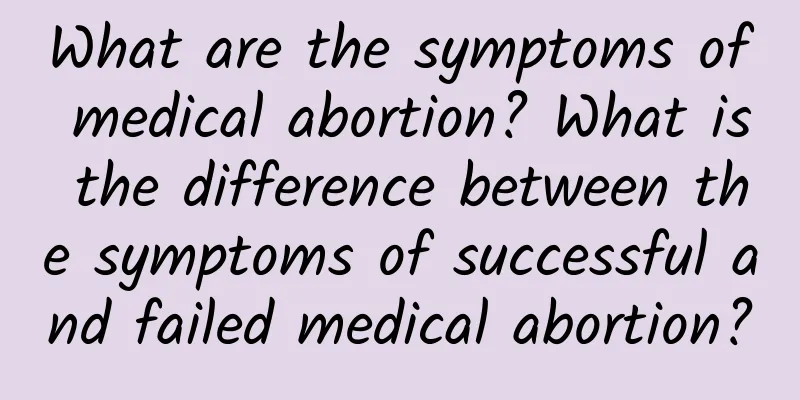What are the symptoms of medical abortion? What is the difference between the symptoms of successful and failed medical abortion?

|
The gestational sac tissue will be discharged 2 to 6 hours after medical abortion. During this period, a small amount of vaginal bleeding will occur, but the time of discharge varies from person to person, which is normal. If the abortion is incomplete, there will be severe abdominal pain, prolonged bleeding, uterine tenderness, fever and other symptoms. Some women will also experience nausea and aversion to greasy food, which requires going to the hospital for a uterine curettage as soon as possible. For some women who have an unexpected pregnancy, if they are not ready to have a baby, they will choose abortion. Medical abortion is a relatively simple method. This method can terminate the pregnancy without intrauterine surgery. If it is the first time to have a medical abortion, usually the symptoms of successful and failed medical abortion are not well understood. So what are the symptoms of medical abortion? |
<<: Is it normal to have less menstrual flow after an abortion? See what the doctor says
>>: What is the normal value of Ureaplasma urealyticum?
Recommend
Pay attention to the causes of vulvar leukoplakia!
Vulvar leukoplakia is also one of the common gyne...
What to do if trichomoniasis vaginitis still itches after taking medication
What should I do if Trichomonas vaginitis still i...
How to use medication in early stage of threatened abortion
The full liberalization of the two-child policy h...
Several types of women who are prone to ectopic pregnancy
Ectopic pregnancy refers to the implantation of t...
Lose weight and get rid of fatty liver! ? Nutritionist: 1 calorie ≠ 1 calorie
Is calorie control all you need to lose weight? X...
Experts explain how to treat chronic adnexitis
With the development of society, more and more fe...
What are the symptoms of subserosal uterine fibroids? How to treat subserosal uterine fibroids?
Subserosal uterine fibroids are a special form of...
Let’s take a look at what harm does uterine fibroids cause?
Uterine fibroids are a common disease in life. Th...
Swimming is prone to fungal vaginitis
Swimming pools in summer are places where bacteri...
How to treat uterine fibroids best? Medication for uterine fibroids
At present, medicine is developing rapidly, and m...
Do I need to treat mild cervicitis? There are five main hazards of cervicitis in women.
Every day, there are a large number of patients q...
What are the treatments for adnexitis?
Although the treatment of adnexitis is rather tro...
The cause of cervical hypertrophy is explained in detail
Patients with cervical hypertrophy all know that ...
What are the symptoms of premature ovarian failure at the age of 42?
Premature ovarian failure refers to early ovarian...
Some common symptoms of chronic cervicitis
The symptoms of chronic cervicitis are of great c...









